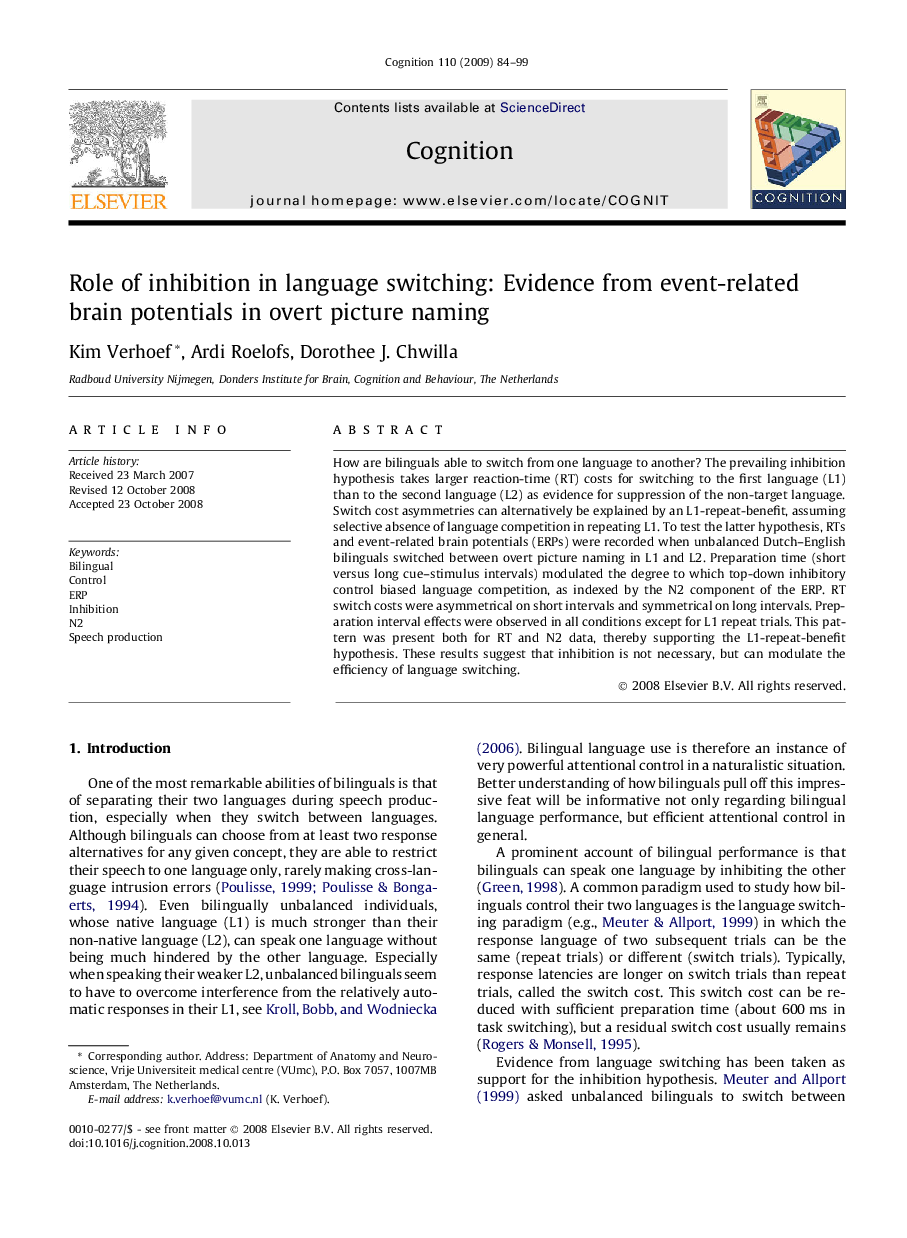| کد مقاله | کد نشریه | سال انتشار | مقاله انگلیسی | نسخه تمام متن |
|---|---|---|---|---|
| 926729 | 921897 | 2009 | 16 صفحه PDF | دانلود رایگان |

How are bilinguals able to switch from one language to another? The prevailing inhibition hypothesis takes larger reaction-time (RT) costs for switching to the first language (L1) than to the second language (L2) as evidence for suppression of the non-target language. Switch cost asymmetries can alternatively be explained by an L1-repeat-benefit, assuming selective absence of language competition in repeating L1. To test the latter hypothesis, RTs and event-related brain potentials (ERPs) were recorded when unbalanced Dutch–English bilinguals switched between overt picture naming in L1 and L2. Preparation time (short versus long cue–stimulus intervals) modulated the degree to which top-down inhibitory control biased language competition, as indexed by the N2 component of the ERP. RT switch costs were asymmetrical on short intervals and symmetrical on long intervals. Preparation interval effects were observed in all conditions except for L1 repeat trials. This pattern was present both for RT and N2 data, thereby supporting the L1-repeat-benefit hypothesis. These results suggest that inhibition is not necessary, but can modulate the efficiency of language switching.
Journal: Cognition - Volume 110, Issue 1, January 2009, Pages 84–99